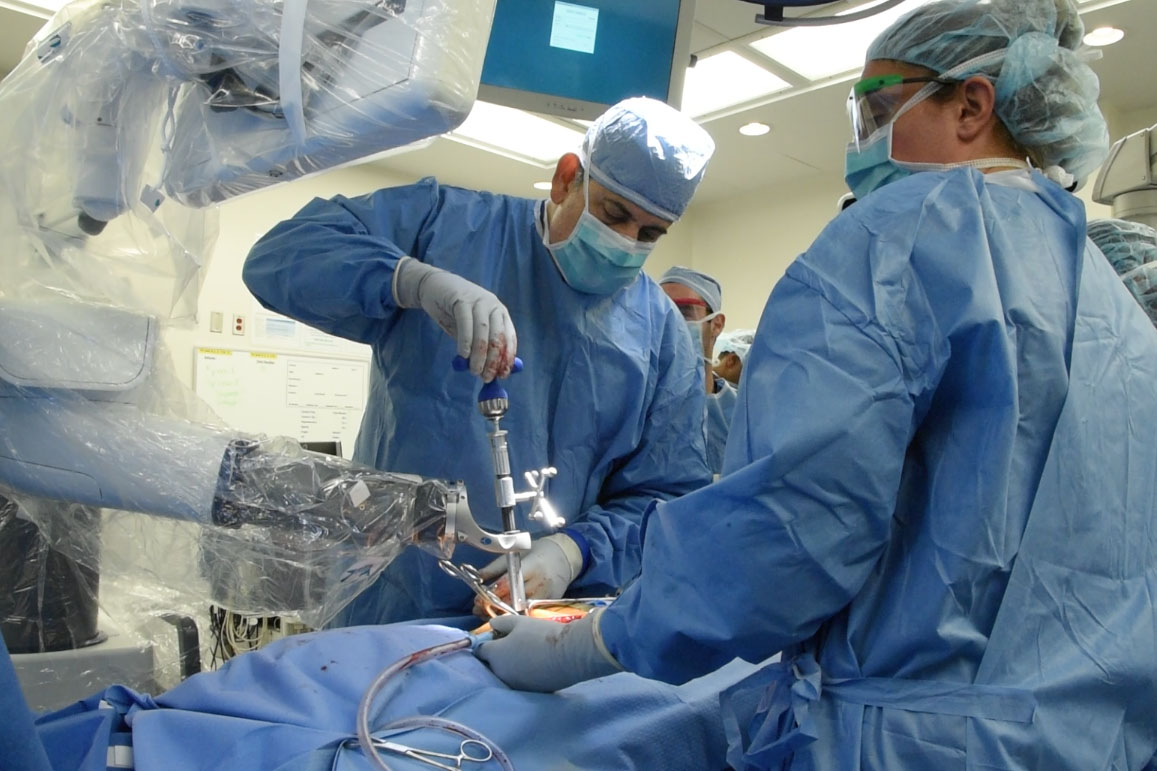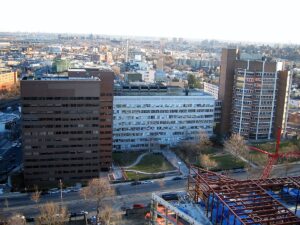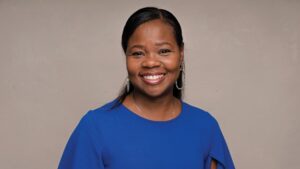It’s something that most of us tend to take for granted. But among the advantages of living in the Baltimore metropolitan area is the incredible access to some of the best health care institutions and facilities in the nation.
From its top-notch nursing, medical and allied health schools to its research institutions to its world-renowned hospitals, Baltimore is blessed with a health care industry envied by communities across the country and world. No wonder so many people from other countries come to Baltimore for treatments and procedures, or to learn at our medical and health care institutions or affiliated centers of higher education.
But that doesn’t mean that our local hospitals are resting on their laurels and reputations. On the contrary, cutting-edge — no pun intended — procedures are giving patients shorter hospital stays, fewer complications and better outcomes.
Here is a look at some of the groundbreaking, innovative techniques at area medical institutions that are making their mark on the health care landscape.
University of Maryland Medical Center
Dr. Howard Eisenberg, a neurosurgeon, and neurologist Dr. Paul Fishman are two of the physician-scientists at the University of Maryland Medical Center who are leading the way in a new treatment that is likely to become the standard of care for conditions such as essential tremor, Parkinson’s disease and glioblastoma.
MRI-guided focused ultrasound is an early-stage, non-invasive therapeutic technology that is transforming treatment for many medical disorders, and has the potential to be a game-changer for many more diseases through the use of ultrasonic energy to target tissue deep in the body without incisions or radiation.
Dr. Eisenberg explains that focused ultrasound combines two medical technologies: focused ultrasound, which provides the energy to treat tissue deep in the body precisely and non-invasively; and magnetic resonance or ultrasound imaging, which is used to identify and target the tissue to be treated, guide and control the treatment in real time, and confirm the effectiveness of the treatment.
“The treatment is similar to using a magnifying glass to focus beams of sunlight on a single point to burn a hole in a leaf,” says Dr. Eisenberg. “With focused ultrasound, an acoustic lens is used to concentrate multiple intersecting beams of ultrasound on a target deep in the body with extreme precision and accuracy.”
Focused ultrasound treatments can be performed on an outpatient basis, require no incisions and can result in minimal discomfort and few complications, allowing for rapid recovery.
In 2016, the U.S. Food and Drug Administration approved focused ultrasound treatment for essential tremor, the most common movement disorder. The University of Maryland Medical Center, in partnership with the University of Maryland School of Medicine, was among an international group of investigators studying MRI-guided focused ultrasound for essential tremor.
The treatment was found to significantly improve tremors and quality of life in patients with essential tremor. In addition, the University of Maryland Medical Center also is using focused ultrasound to open the blood-brain barrier to improve chemotherapy to brain tumors and for experimental therapies like gene and stem cell therapy.
“New technologies offer opportunities to treat patients in novel ways,” says Dr. Eisenberg. “You can see results immediately.”
University of Maryland St. Joseph Medical Center
John Stathopoulos was suffering from swollen legs and shortness of breath when his cardiologist, Dr. Stephen Pollock, told him he needed a heart valve replacement. Last December, Stathopoulos underwent a minimally invasive transcatheter aortic valve replacement (TAVR), performed by Dr. Syed Zaidi, University of Maryland St. Joseph Medical Center’s interventional cardiologist and structural heart specialist. The procedure was performed in the hospital’s new hybrid operating room that can be adapted to meet the needs of the patient, whether having a minimally invasive procedure like TAVR or requiring open-heart surgery.
“Cardiac care is changing,” says Dr. Zaidi. “Patients are living longer and diseases are getting more complex. We need a team approach, not just one doctor.” That’s the idea behind the new field of structural heart disease interventional cardiology.
The growth of the field means that patients like Stathopoulos don’t have to undergo the rigors of open-heart surgery, which is often risky for older, sicker patients. When Dr. Zaidi joined St. Joseph Medical Center two years ago, there was no structural heart program. Now, as the only cardiac hospital in Baltimore County, patients have the option of having their procedure done closer to home.
The hybrid operating room opened six months ago, after close to a year of construction. It is a state-of-the-art room, located in the main hospital, which is fully capable of performing every open-heart or transcatheter procedure.
Dr. Zaidi says that 35 to 40 percent of cardiac surgeries are now being done through minimally invasive procedures, which results in a shorter hospital stay, fewer complications, less risk of stroke, less chance of needing to be placed on a bypass machine and fewer restrictions.
“A patient with a valve replacement can resume activities almost immediately,” says Dr. Zaidi.
Stathopoulos heartily agrees that the minimally invasive procedure was the way to go. “It was a surprising routine experience with no pain to speak of, a four-day hospital stay, and an almost immediate return to normal activities,” he says, adding that since he underwent the TAVR, he is enjoying a “second lease on life,” has no shortness of breath, can walk longer distances and wear a regular shoe size again. “It was a miraculous procedure and doctor!”
That’s the response that led Dr. Zaidi to become a physician in the first place. The son of two physicians, he grew up wanting to emulate his parents and “have an impact on someone’s life.”
“When you can use your knowledge and skill to fix a blockage in the heart, it’s instant gratification,” he says. “I get to save a life. That’s the most important thing for me.”
LifeBridge Health Sports Medicine Institute
The LifeBridge Health Sports Medicine Institute is off and running at Foundry Row in Owings Mills. Led by neurologist Dr. Kevin Crutchfield and orthopedic surgeon Dr. Craig Bennett, the institute is bringing a team approach to sports medicine, combining state-of-the-art neurological and orthopedic treatments for athletes at all levels.
In addition to physicians, the multi-disciplinary team includes athletic trainers, physical therapists and other allied health providers, all working together to provide an integrated, custom-care plan for every player — from professional athletes to weekend warriors and every level in between.
Along with expert treatments and follow-up care, the team works with clients to prevent injuries through proper techniques, sports-specific strength analyses and speed and strength conditioning in collaboration with the Parisi Speed School at LifeBridge Health & Fitness.
The LifeBridge Health Sports Medicine team also works with coaches and team trainers to provide a personalized plan of care from diagnosis to return to play and beyond.
Dr. Crutchfield and Dr. Bennett anchor the team, combining their individual medical expertise with decades of experience treating professional, collegiate and amateur athletes, including high-profile players from a wide variety of sports.
Dr. Bennett is a board-certified orthopedic surgeon, fellowship-trained in sports medicine, with more than 20 years of orthopedic surgery experience. He has provided medical care to teams at every athletic level, most recently serving as the director of sports medicine at the University of Maryland, where he was the team orthopedic surgeon for UM athletics. He has treated a number of NFL and Division I college athletes, helping them return successfully to their sports.
Dr. Crutchfield, a nationally known expert on concussions and traumatic brain injury, directs LifeBridge Health’s Comprehensive Sports Concussion Program. He has served as an independent neurologist for many professional sports leagues and is board certified in psychiatry and neurology. He is a faculty appointee at the Uniformed Services University of Health Sciences and is a researcher and consultant to the U.S. military regarding the effects of traumatic brain injuries.
“We’re not here just to fix the problem you came in with,” says Dr. Bennett. “We’re here through recovery to prevention.”
Dr. Crutchfield likens his role as neurologist to a “glorified electrician.” “We look at the wiring of the body,” he says.
Dr. Crutchfield notes that no other hospital in the region has a neurologist and orthopedic surgeon working side by side in sports medicine. “We want to train the body to reduce risk and prevent future injuries,” he says. “It’s not just ‘fix it and goodbye.’”
A former high-level athlete himself who tried out for the U.S. Olympic soccer team, Dr. Crutchfield also is an expert in concussion care, an area that needs more attention as many injuries diagnosed as concussions are, in fact, neck injuries.
With the number of athletes at all levels living, working or attending school in the Owings Mills area, both Dr. Bennett and Dr. Crutchfield say it makes good sense for LifeBridge to be expanding its sports medicine team in the area.
Conventional spine surgeries have long used X-rays to determine where screws should be placed. While the X-rays aided the surgeon’s precision, they were not foolproof, and they also exposed the surgeon to repeated doses of radiation.
About 20 years ago, brain surgeons began using image guidance, giving surgeons the ability to see pre-operative CT scans or MRIs during surgery to improve the precision and safety of brain surgeries. Now, neurosurgeons such as Dr. Nicholas Theodore, Johns Hopkins’ director of the Neurosurgical Spine Center, can apply this technology to image-guided robotic spine surgery.
Last October, Dr. Theodore and his colleagues began using a new image-guided robot that he co-invented for spine stabilization surgeries.
Image-guided spine surgery already exists, but Dr. Theodore explains that when the surgeon looks at the image, he or she is not looking at the patient. Dr. Theodore likens it to a car drifting in the direction that a driver is looking if he’s not looking directly at the road. If the surgeon isn’t looking directly at the patient, the screws he’s inserting may not go in straight.
Dr. Theodore began developing the idea for the robot 15 years ago while serving as the director of neuro-trauma at Barrow Neurological Institute in Phoenix, Ariz. Collaborating with biomedical engineer Neil Crawford, the two developed a system where the surgeon can touch a screen with the patient’s CT scan image at the precise spot he wants to place the screw, and the robot would do it for him.
Dr. Theodore and Crawford built a prototype of the computer and sold their company. Hopkins purchased the first robot in the world; more than 40 are now in medical centers across the country.
The robots can place screws with pinpoint accuracy and adjust their position in response to the slightest movement, such as a patient’s breathing.
Approximately 80 of these surgeries have been performed in the past year, and Dr. Theodore says he expects the robotic system to change the field of spine surgery.
Retired ophthalmologist Dr. Morton Alterman underwent a spinal laminectomy and fusion with the robotic system last year. “I was in progressive pain from spinal stenosis,” the Rockville resident says. “I couldn’t put off treatment any longer.”
Dr. Alterman says that his pain had progressed to the point that he couldn’t walk around the block without having to sit down four times. Now, he’s pain-free, “though I’m not any younger,” he chuckles.
Named a “Best National Hospital in Orthopedics” by U.S. News & World Report, Mercy Medical Center offers innovative joint, hip and knee preservation, replacement and treatment options, including the MAKOplasty total knee replacement, an alternative to traditional total knee replacement.
Dr. Marc Hungerford, Mercy’s chief of orthopedics, explains that MAKO Robotic-Arm Assisted Technology enables surgeons to more accurately position a patient’s joint replacement. In addition, the state-of-the-art implant gives patients natural range of motion. The result is often a better, and longer-performing joint, as well as a faster recovery after surgery.
The process begins with a CT scan of the patient’s knee joint, which is used to generate a 3D virtual model of the patient’s anatomy. This model is then uploaded on to the MAKOplasty system software and is used to create a pre-operative plan, specific to that patient.
During surgery, the orthopedic surgeon guides the robotic arm and is in control of it at all times. The system provides auditory, visual and tactile feedback, stopping the robotic arm if necessary before bone can be removed outside the planned area. After diseased bone and cartilage are removed, the orthopedic surgeon places the implant in the knee. During the procedure, the surgeon can make any necessary adjustments while guiding the robotic arm.
Dr. Hungerford began working in a lab when he was 16 and was drawn to orthopedics because he likes working with his hands. “Orthopedics is also a specialty where you can see a good outcome for your patients in a short period of time,” he says. “They can come in limping and go home not limping.”
MedStar Union Memorial Hospital
In the newly opened radial lounge at MedStar Union Memorial Hospital, John Lurz sits comfortably in a chair with his wife, eating a sandwich and fresh fruit, holding a book in his lap. Wearing khakis and a button-down shirt, a small wristband is the only hint that an hour earlier, Lurz underwent a procedure that opened a potentially lethal coronary blockage.
The scene underscores MedStar Union Memorial’s leadership in interventional cardiology, and its progressive shift toward safer and more comfortable cardiac catheterizations. To be specific, accessing the coronary arteries through the wrist, known as the transradial approach, rather than the traditional access through the femoral artery in the groin, virtually eliminates the risk of major bleeding.
This transradial approach to cardiac catheterization was first performed at MedStar Union Memorial in 2010 when the chief of its catheterization lab, Dr. John Wang, became the first physician in the state to widely adopt this advanced technique. Since then, nearly 90 percent of the hospital’s cardiac catheterization procedures are done transradially, a rate that leads the mid-Atlantic region and is more than twice the national average.
“The advantages of the transradial catheterization are three-fold,” says Dr. Wang, pointing to patient comfort, patient safety and hospital economics.
No longer do patients undergoing a catheterization have to lie flat for six to eight hours, as they do in traditional cardiac catheterization recovery units. In addition, the risk of bleeding from the transradial approach is virtually nil. And since patients have fewer complications and can be discharged sooner, hospitals save money when it comes to patient care expenses.
“One-third of patients undergoing a catheterization done transradially can go home the same day and sleep in their own bed that night,” says Dr. Wang.
In recent months, the wrist catheterization has become even more refined, with the ability to insert the catheter without a sheath, which means a smaller hole is needed and recovery is even quicker. MedStar Union Memorial is the first hospital in the region to use the sheathless catheter.
Because most of the catheterizations done at MedStar Union Memorial are performed transradially, it made sense to build a new recovery center for radial catheterization patients.
For patients like Lurz, both the procedure itself and the new lounge made what can be a frightening medical event more comfortable. “An hour later,” says Lurz, “my wife helped me get dressed and we were able to pick something to eat from right there in the lounge. Being in the lounge really de-stressed the entire experience for me.”
Dr. Wang says he loves the “immediacy” of his specialty of interventional cardiology. “You can transform someone’s life right before your eyes,” he says. “It doesn’t take years to take someone who is dying and return him to health. It’s incredibly gratifying.”
Carol Sorgen is a Baltimore-based freelance writer.





